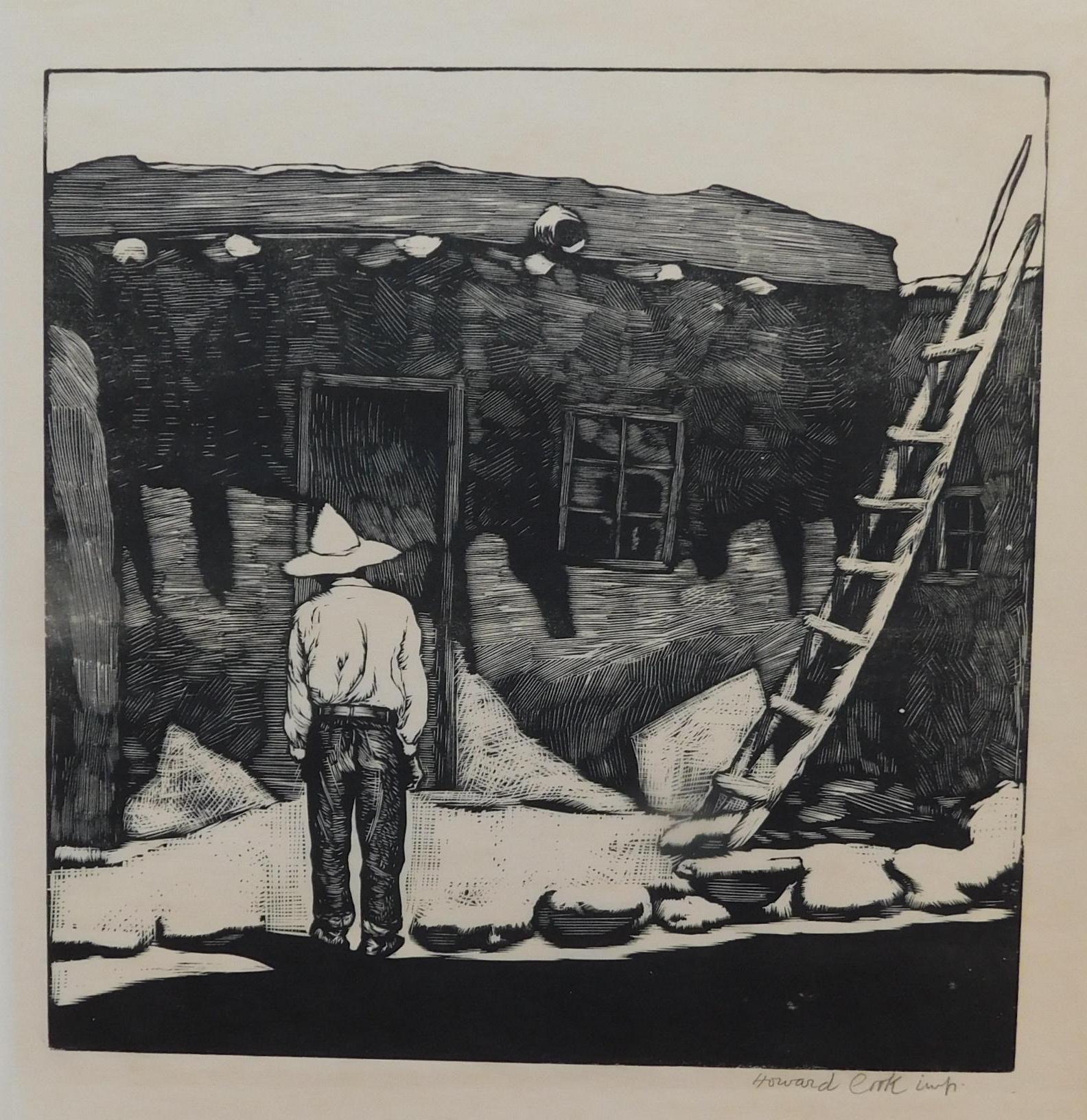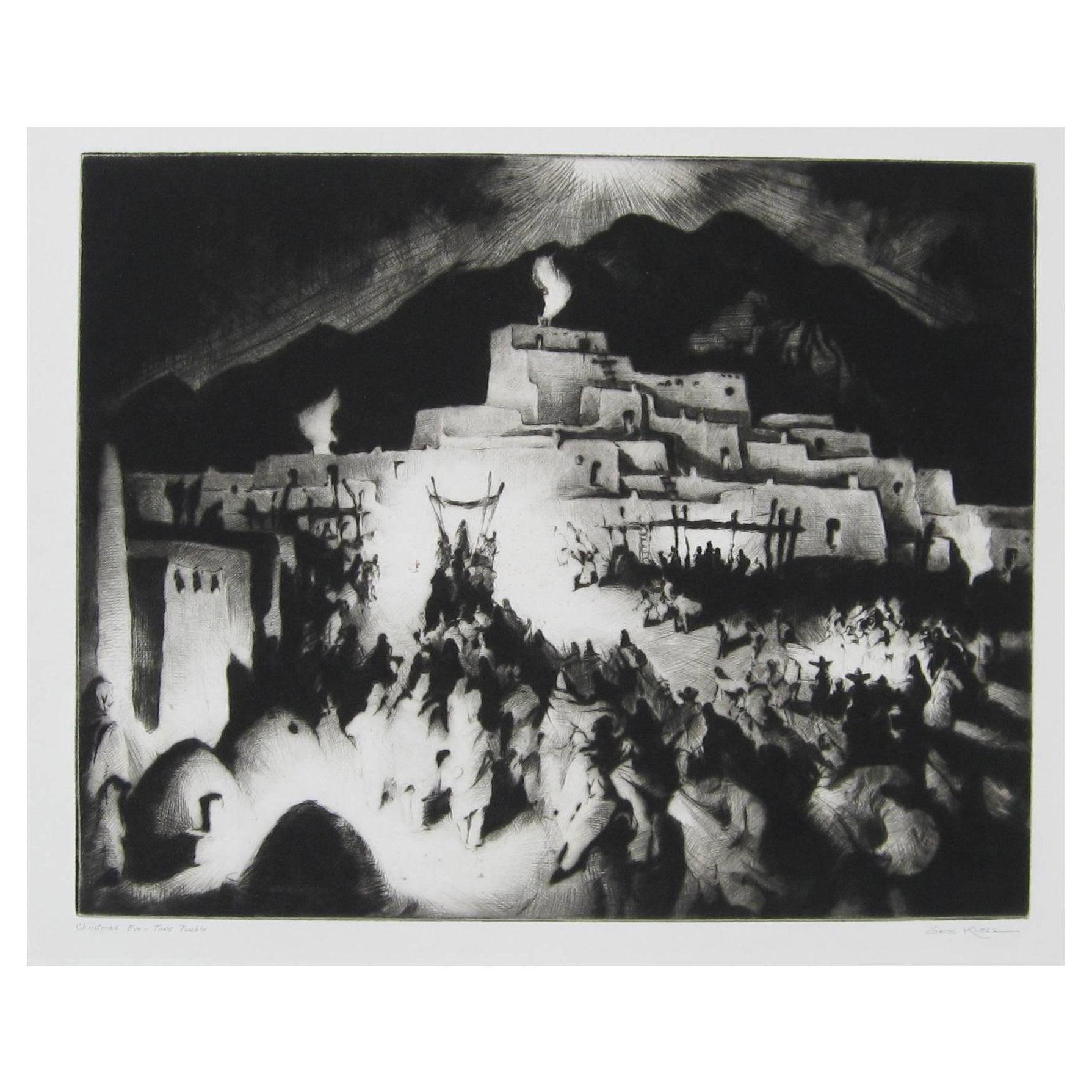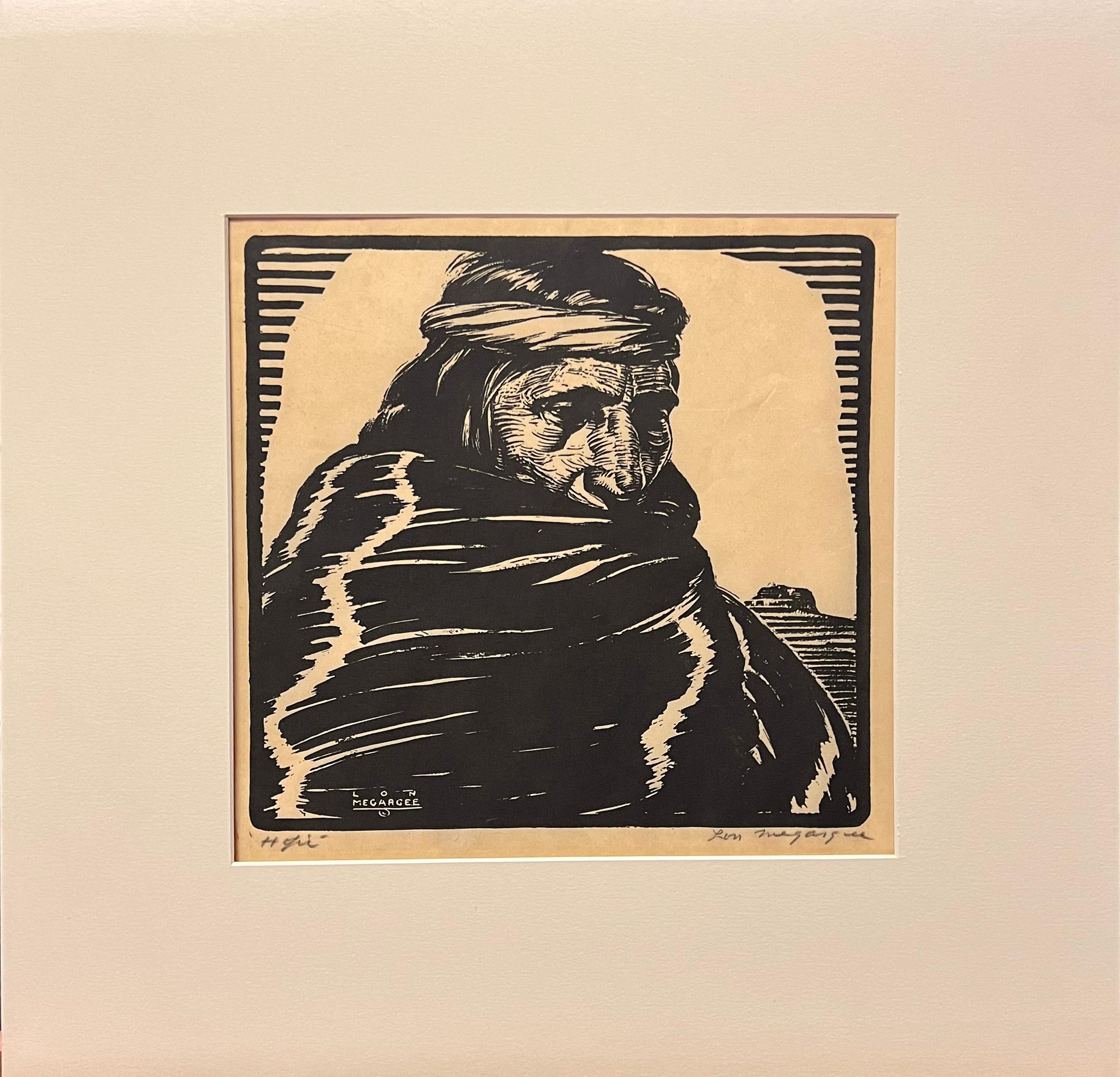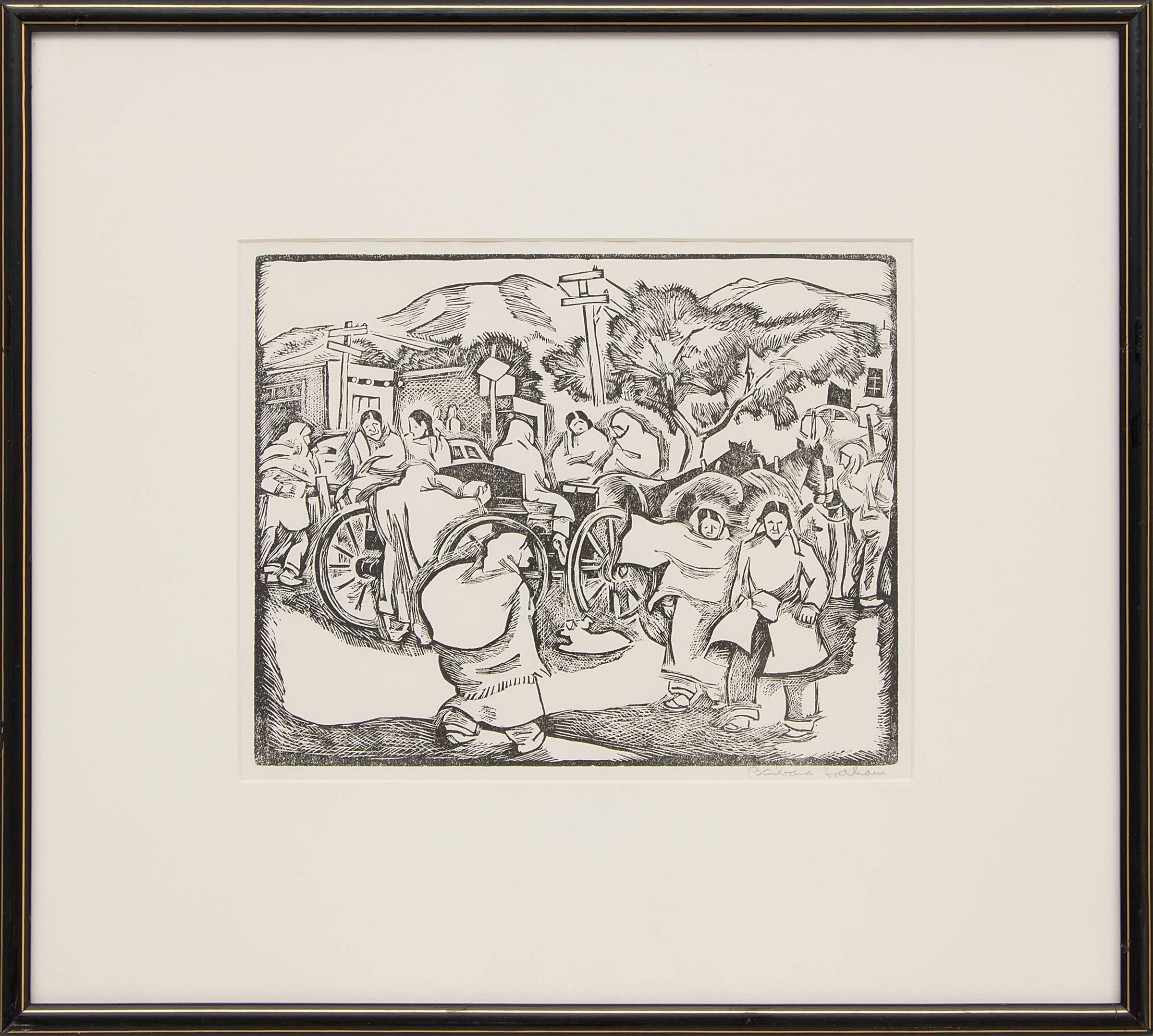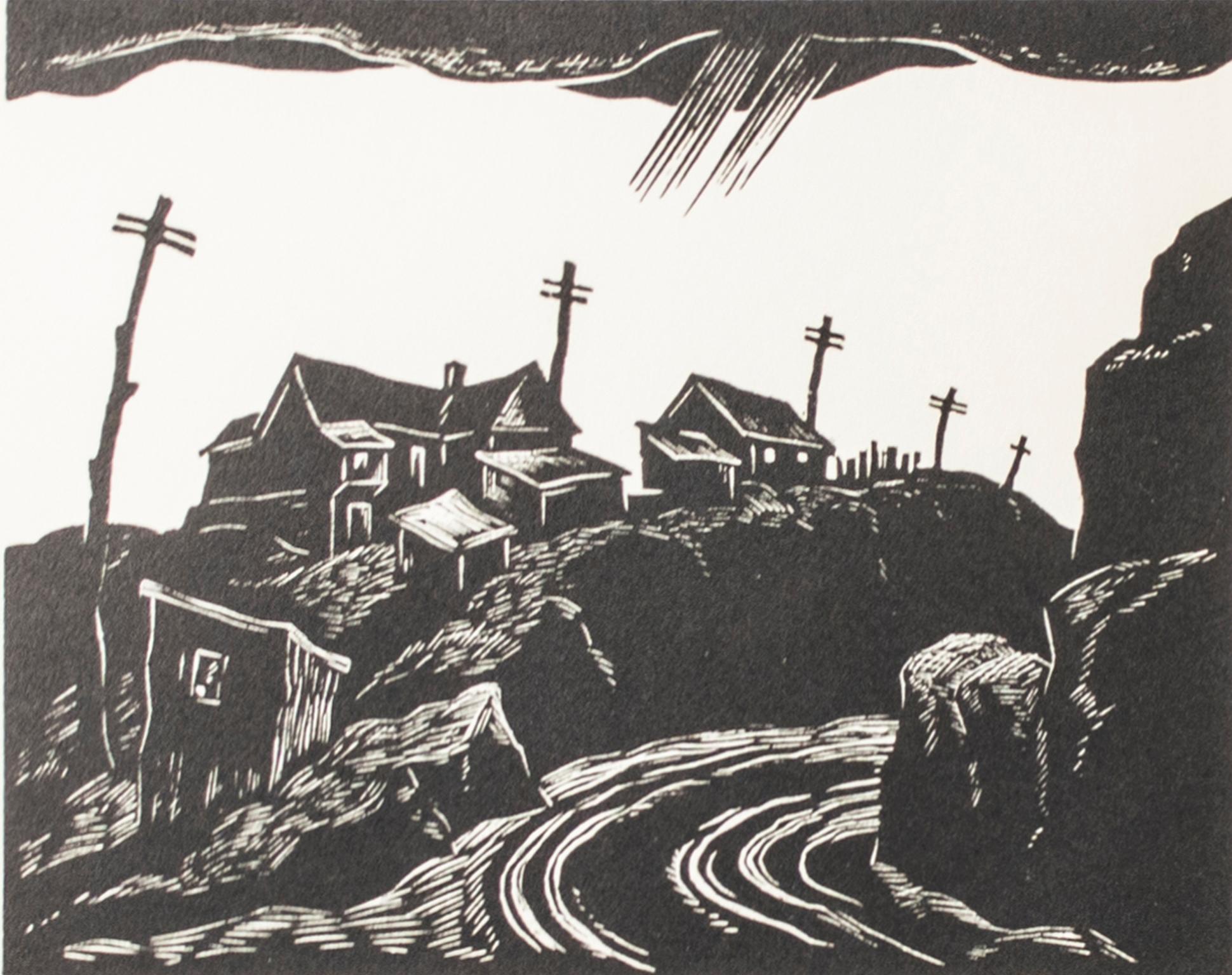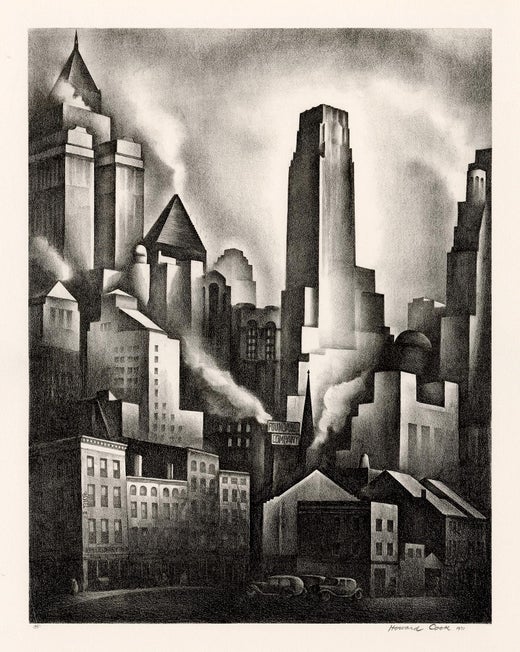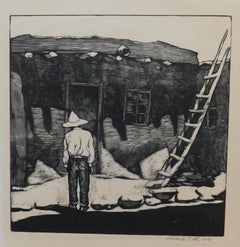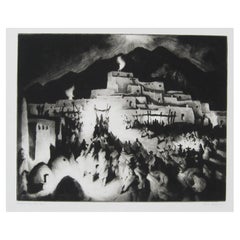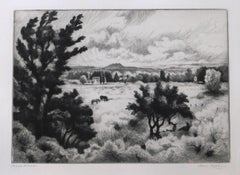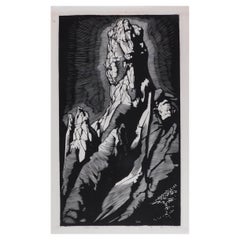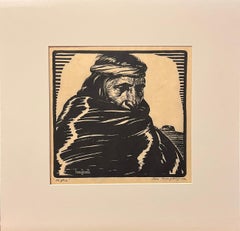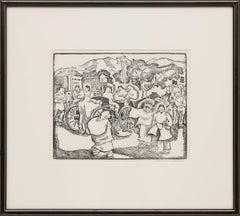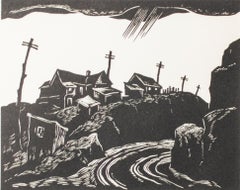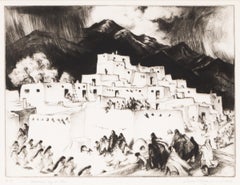Howard Norton CookHoward Cook Taos Artist Original Woodcut, 1927 - Morning Smokes, Taos Pueblo1927
1927
About the Item
- Creator:Howard Norton Cook (1901-1980, American)
- Creation Year:1927
- Dimensions:Height: 18 in (45.72 cm)Width: 14 in (35.56 cm)Depth: 0.13 in (3.31 mm)
- Medium:
- Period:
- Condition:
- Gallery Location:Phoenix, AZ
- Reference Number:1stDibs: LU2749214808642
Howard Norton Cook
Howard Norton Cook left his childhood home in Springfield, Massachusetts in 1919 to receive formal training in New York at the Art Students League. While in New York, Cook studied under George Bridgman and attended an experimental class with Max Weber and Andrew Dasburg. He spent his time between sessions painting outdoor billboards and working in lithography and photo-engraving shops. In 1922, Cook began work as an illustrator, contributing woodcuts and drawings to Harper's, Scribner's, Survey, Atlantic Monthly, and Forum. Various assignments allowed him to travel all over the world. Cook was on assignment for Forum to illustrate the serialization of Willa Cather's Death Comes to the Archbishop when he first visited New Mexico in 1926. Cook remained in New Mexico for a year and a half, during which time he met and married artist Barbara Latham. During the next few years, the couple traveled to Paris where Cook studied in a prominent lithographic workshop; to Taxco, Mexico, where he studied fresco painting on a Guggenheim fellowship; and to the Deep South of the United States on a second Guggenheim fellowship. In 1935, Cook and Latham settled in Taos, New Mexico. By that time, Cook had been represented in 50 Prints of the Year several times, yet his focus turned to fresco painting. He traveled across throughout the United States on mural commissions and, in 1937, the Architectural League of New York awarded Cook the Gold Medal for mural painting. Cook later served in the Navy as an artist-war correspondent in the South Pacific. His paintings from that period were exhibited in the National Gallery in Washington, D.C., and later displayed across the U.S. in a traveling exhibition funded by the War Department. After returning from the war, Cook produced several powerful lithographs depicting his experiences in the South Pacific. In 1949, he was elected to membership in the National Academy as a graphic artist. During the 1940's, Cook was known for his watercolors set in New Mexico. Later paintings in oil became increasingly abstract. Some of the artist's favorite subjects included Southwestern landscapes and Indian dances that focused on conveying a strong sense of movement. Throughout his career, Cook was a guest professor at many art schools and universities. In 1967, he became the first artist in residence at the Roswell Museum, Roswell, NM. Howard Cook remained in New Mexico until his death in 1980. ©David Cook Galleries, LLC
- ShippingRetrieving quote...Shipping from: Phoenix, AZ
- Return Policy
More From This Seller
View AllMid-20th Century Landscape Prints
Paper, Ink
Mid-20th Century Abstract Prints
Paper
Mid-20th Century Landscape Prints
Paper, Etching
1920s More Prints
Paper
1980s Portrait Prints
Paper
Mid-20th Century Landscape Prints
Woodcut
You May Also Like
1920s American Impressionist Figurative Prints
Woodcut
Mid-20th Century American Modern Figurative Prints
Linocut
1930s American Modern Landscape Prints
Woodcut
1950s American Modern Landscape Prints
Etching
1930s American Modern Landscape Prints
Woodcut
1910s Cubist Figurative Prints
Woodcut
